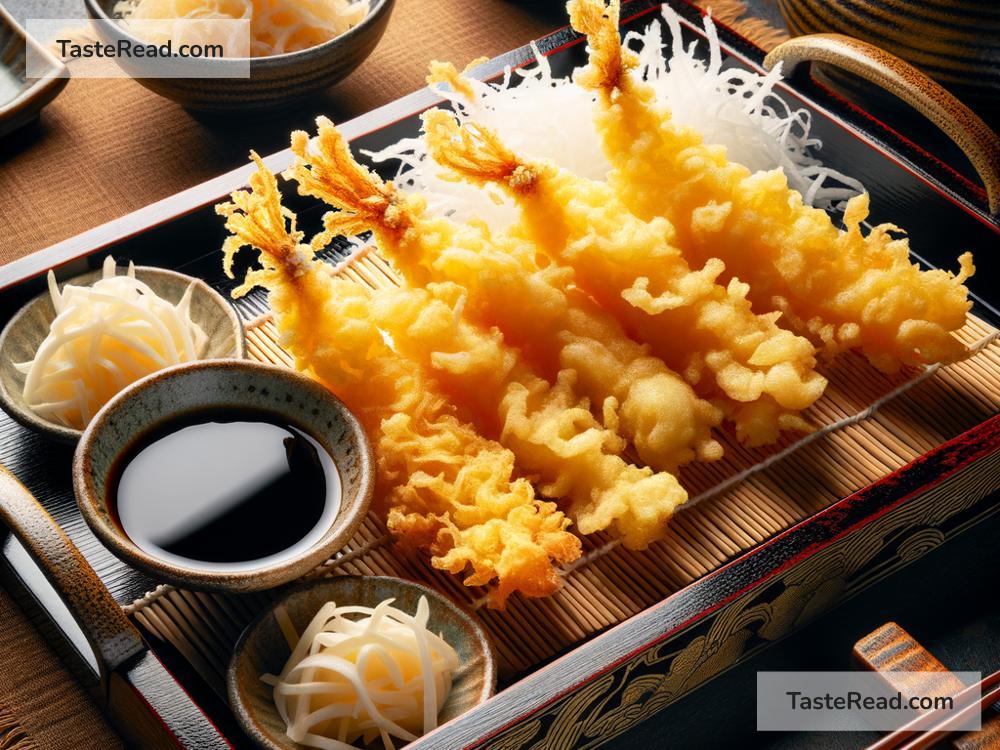Title: The Global Journey of Japanese Tempura: From Simple Beginnings to World Delicacy
Tempura, today a globally adored dish, embodies the art of Japanese cuisine with its simple ingredients transformed into delicately fried pieces of heaven. This journey from humble beginnings to international fame is as fascinating as it is delicious. Let’s delve into how tempura crossed the seas from Japan and won hearts around the world, becoming a universally cherished delicacy.
Tempura’s origins are a story of cultural fusion, tracing back to the mid-16th century when Portuguese missionaries landed in Japan. The Portuguese had a tradition of frying food during the Lent period, called “Tempora,” which inspired local chefs. However, the Japanese took this concept and refined it, creating what we now know as tempura – a dish characterized by its light, airy batter and the subtle taste of fresh ingredients like seafood and vegetables, perfectly coated and deep-fried to golden perfection.
What makes tempura unique is its cooking technique and the quality of its ingredients. The batter, a simple mix of cold water and flour, sometimes with added egg or baking soda, is kept lumpy and is not overmixed. This results in a coating that is crisp and light rather than heavy and greasy. The oil for frying, traditionally sesame or a mix that includes sesame oil, is kept at a temperature that quickly cooks the outside while keeping the inside tender and juicy. This attention to detail and the harmonization of textures and flavors elevate tempura from mere deep-fried food to an exquisite dining experience.
As Japan opened up to the world in the late 19th and early 20th centuries, its culinary traditions began to spread. Tempura was among the dishes that caught the curiosity and palates of Westerners. Post World War II, as global travel became more accessible and people became more adventurous with their tastes, tempura began turning up on menus around the globe, no longer just in Japanese or Asian restaurants but also in fusion and upscale dining places.
The adaptability of tempura has played a significant role in its global appeal. Almost any ingredient can be turned into tempura, from the traditional shrimp and sweet potato to broccoli, mushrooms, and avocados. This versatility means that it can easily be incorporated into numerous cuisines and dietary preferences, making it a favorite among chefs looking to add a Japanese touch to their dishes.
The experience of eating tempura has also contributed to its popularity. It’s often cooked in front of diners in restaurants, adding an element of performance to the meal. The sound of the sizzle, the sight of the chef’s skilled movements, and the aroma of the frying food enhance the anticipation and enjoyment of eating tempura. It’s not only about taste but the immersive experience that surrounds it.
Tempura’s global journey has also been fueled by the growing interest in Japanese culture, from anime and manga to fashion and film. As people across the world became more curious about all things Japanese, their interest in exploring Japanese food grew. Tempura, with its uncomplicated elegance, became a gateway for many into the broader world of Japanese cuisine.
Today, tempura is a staple in Japanese restaurants worldwide and has inspired variations that fuse elements from other cuisines, showcasing its capacity for innovation. From tempura sushi rolls to tempura ice cream, its versatility knows no bounds. However, at its core remains the essence of Japanese culinary philosophy: the emphasis on the quality and freshness of ingredients, the meticulousness of preparation, and the balance of flavors and textures.
In sum, tempura’s global journey from a simple method of frying introduced by Portuguese traders to a beloved Japanese delicacy celebrated worldwide is a testament to its irresistible appeal. It’s more than just food; it’s a cultural ambassador, inviting people to explore the richness of Japanese cuisine and, by extension, its history, tradition, and innovation. Tempura’s light, crispy texture, and the delicate flavor have made it a global favorite, transcending borders and bringing a piece of Japan to tables around the world. Whether enjoyed in a high-end restaurant, a local sushi bar, or a bustling street market, tempura remains a timeless classic, a delightful culinary creation that continues to capture the hearts and taste buds of food enthusiasts everywhere.


